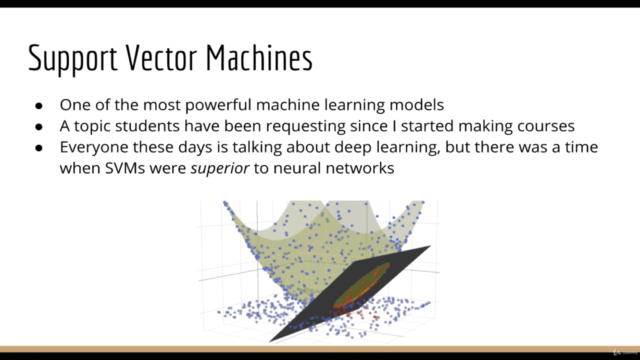Machine Learning and AI: Support Vector Machines in Python
Artificial Intelligence and Data Science Algorithms in Python for Classification and Regression
4.70 (1870 reviews)

29,473
students
9 hours
content
Apr 2025
last update
$74.99
regular price
What you will learn
Apply SVMs to practical applications: image recognition, spam detection, medical diagnosis, and regression analysis
Understand the theory behind SVMs from scratch (basic geometry)
Use Lagrangian Duality to derive the Kernel SVM
Understand how Quadratic Programming is applied to SVM
Support Vector Regression
Polynomial Kernel, Gaussian Kernel, and Sigmoid Kernel
Build your own RBF Network and other Neural Networks based on SVM
Screenshots




Related Topics
2020688
udemy ID
11/11/2018
course created date
9/10/2019
course indexed date
Bot
course submited by